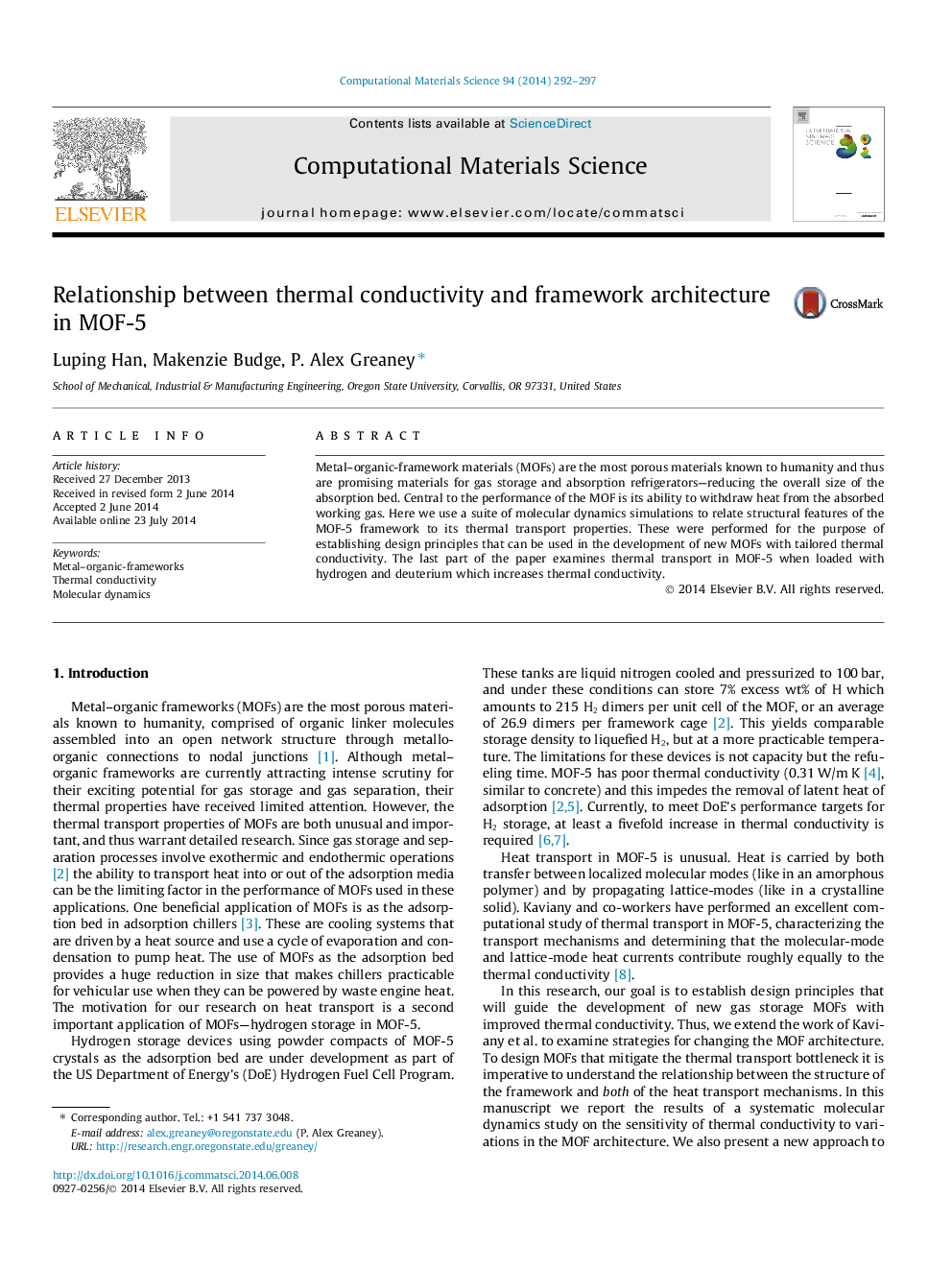| Article ID | Journal | Published Year | Pages | File Type |
|---|---|---|---|---|
| 1560814 | Computational Materials Science | 2014 | 6 Pages |
•We determine sensitivity of MOF thermal conductivity to framework architecture.•Spatial heat current cross-correlations reveal thermal bottle-neck at nodes.•Increasing linker length reduces heat conduction faster that the geometry scaling.•Results indicate ways to surmount heat removal bottle-neck in gas storage.
Metal–organic-framework materials (MOFs) are the most porous materials known to humanity and thus are promising materials for gas storage and absorption refrigerators—reducing the overall size of the absorption bed. Central to the performance of the MOF is its ability to withdraw heat from the absorbed working gas. Here we use a suite of molecular dynamics simulations to relate structural features of the MOF-5 framework to its thermal transport properties. These were performed for the purpose of establishing design principles that can be used in the development of new MOFs with tailored thermal conductivity. The last part of the paper examines thermal transport in MOF-5 when loaded with hydrogen and deuterium which increases thermal conductivity.
